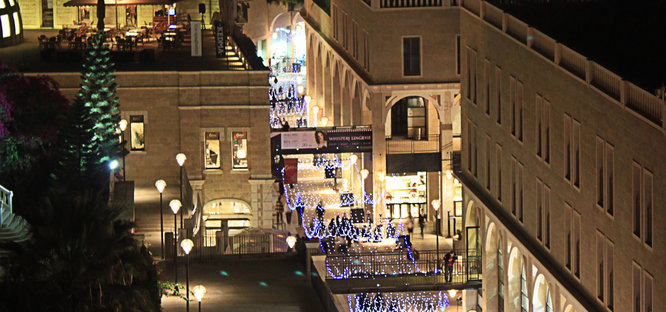Starchitects in the Promised Land
Starchitects in the Promised Land

In the Summer 2013 issue of Dissent, Max Holleran described the role of world-famous architects in Spain’s housing bubble. These “starchitects”—among them Santiago Calatrava, Herzog & de Meuron, and Frank Gehry—were not deterred by the failure of the Spanish real estate market. Their international status allows them to move on to new landscapes, including Jerusalem. A recent article in Architizer by Daniel Rauchwerger offers a stunning photographic survey of new high-profile buildings planned for Jerusalem, while a sweep of the daily press reveals ten new high-rise projects in various stages of planning and permitting.
As in Spain, these luxury developments stand in stark contrast to the worsening economic straits of many citizens. Yonatan Mendel, writing in the New Left Review, observes that Jerusalem’s demographics have been transformed by
…the growing flight of mostly young secular residents from the city, in search of what they perceived as more liberal, peaceful or promising habitats. From the 90s, Jerusalem has been experiencing net emigration combined with a rising population, due to the high birth-rate of the Haredi and Palestinian communities. At the same time, the city has been growing poorer: average [monthly] income per person is 3,300 shekels [$927 USD], exactly half that of Israel’s business capital, Tel Aviv. In 2010 Jerusalem was awarded the dubious title of the poorest city in Israel.
The new additions to be added to Jerusalem’s skyline are for the well-to-do. Many of the new apartments will be sold to foreigners. Critics have invoked the image of “ghost towns” to describe the new luxury developments, many of which sit vacant for much of the year. There is no deference made to economic integration. New luxury high rise residential towers in Manhattan often obtain government bond financing that 20 percent of the units be reserved for moderate income families at 80 percent of area median income. Even this rudimentary gesture toward economic integration is not to be found in Jerusalem’s new developments. None of the new projects include affordable housing or even apartments for the middle classes.
According to recent study, only the wealthiest 30 percent of Israelis can afford to buy a home and take out a reasonable mortgage to do so. The researchers also showed that working class salaries have not kept pace with home price increases over the past twenty years, and concluded that their findings “show the need to consider far-reaching reforms that would drastically alter a households’ ability to buy homes.” The ongoing justice protests in 2011 (sometimes known as the “housing protest”) and the center-left political parties have raised their voices over the chronic inability of the average working Israeli family, the young, and senior citizens to afford decent housing. As Stav Shaffir, a leader of the protests who is now a Labor member of the Knesset, put it earlier this year:
Affordable housing in Israel, very limited, very small, when so many people joined and hundreds of thousands of people started to march together and talk about many other issues. We understood that it’s not about housing, that housing is a symbol. It’s about a home, and what home means.




